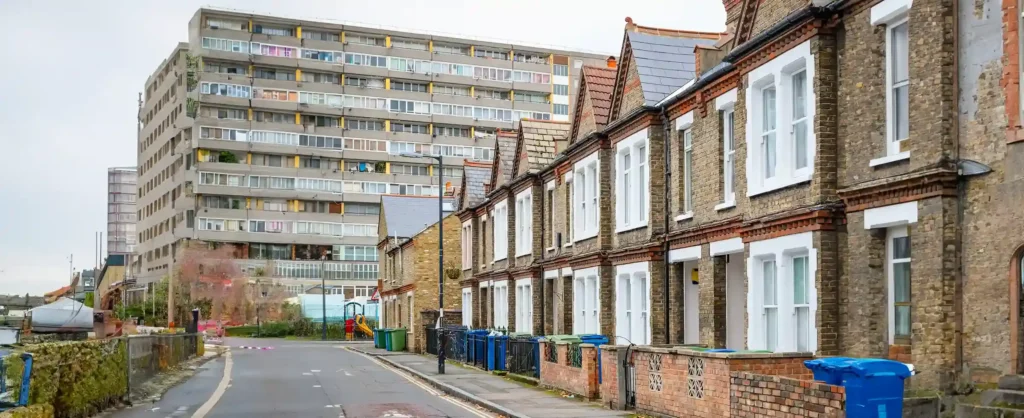What is a Fully-Managed Social Property Investment?
Buy-to-let properties have been a reliable source of passive income for investors for decades. The appeal of being able to place your money in a tangible asset that doesn’t require a lot of hands-on- involvement is hard to deny, especially when that asset is fully-managed.
With fully-managed property investment, landlords and investors leave administration to a third party, allowing them to collect their passive income without pulling too much time away from their other responsibilities. That administration can include finding tenants, managing repairs, collecting rent and a range of other processes that can be daunting even to veteran investors.
Social property investment is a relatively new concept that has become increasingly popular recently. With homelessness and low-income households becoming bigger concerns thanks to the ongoing housing crisis, local and national government initiatives have been implemented to provide alternative solutions.
For those seeking to blend property investment with social responsibility that impacts vulnerable communities, social housing is a rapidly expanding area with just as many fully-managed offerings as traditional buy-to-lets. If you’re interested in learning more about fully-managed social property investment, the team at Concept Capital Group is happy to help.
Understanding Fully-Managed Property Investment
What is it about fully-managed property investment that makes it so appealing to investors?
For one thing, being a landlord can often feel like a full-time job. Managing properties by yourself means overseeing day-to-day operations, sourcing tenants, advertising and much, much more. For a single property, those duties can be time-consuming. For multiple properties, they can often become a serious juggling act.
Some property investors choose to use rent collection services to market their properties, find tenants and collect their passive income. Even with the use of these services, however, the responsibility for maintenance and legal matters still falls on the owner.
Fully-managed properties offer a more hands-off approach. By placing the hard work in the hands of trained professionals, anyone with the funds and the initiative to invest can be a landlord regardless of their experience or other obligations. For stress-free passive income in a buy-to-let market, there are few options that offer more consistency than fully-managed property investment.
Understanding Fully-Managed Social Property Investment
Making money is always nice, but what about investors who want to profit in a socially positive way?
Socially responsible investing – also known as impact investing – is the process of placing your investment capital in companies, funds and programs that have a positive social impact while actively avoiding investment opportunities that negatively affect the world at large. An impact investor may typically engage in opportunities that prioritise social justice, sustainability and charitable causes.
Social property investment sits at the intersection of buy-to-let property investment and impact investing. It is a collaborative strategy that combines the strength and resources of private investors with the infrastructure of charities and government partners to provide more robust solutions for housing vulnerable individuals.
Traditionally, social property investment hinges on landlords or property management companies offering their properties to charitable or government organisations for housing vulnerable tenants. Landlords then enjoy a more consistent monthly rental income that avoids the potential pitfalls of having to seek and manage tenants themselves.
For a certain breed of investors, fully-managed social properties are a fantastic route to an ethical return on their investment that can be just as lucrative as conventional buy-to-lets with half the effort.
A Brief History of Social Property Investment
Although it only became a hot topic more recently, social property investment is hardly a new concept.
In Victorian England, the industrial revolution led to overcrowding and a lack of housing in urban areas. In an effort to alleviate these issues, Model Dwelling Companies (MDCs) were formed to provide suitable housing for the working class that could also turn a profit for socially-minded investors of the day.
These MDCs raised capital to build large housing developments that could be used by the growing number of workers struggling to secure shelter. By 1875, there were approximately 40 MDCs in the UK responsible for tens of thousands of housing units.
Despite making a significant social impact that still sees some of their properties in use today, MDCs were still met with contemporary criticisms. Many accused the properties they offered of being reserved for a “labour aristocracy” of ‘desirable’ members of the working class and not those truly in need of housing.
Aside from MDCs, there were also charities dedicated to providing social housing solutions by partnering with private investors. These included the likes of the Society for Improving the Condition of the Labouring Classes (SICLC), which used a subscription-based model to fund housing projects.
Individual social reformers like Octavia Hill (1838 – 1912) worked tirelessly to address the poor state of housing. Hill was a prominent figure in social justice at the time who took a personal interest in helping the working class living in urban slums. Like other critics of the time, Hill believed that MDCs had failed the poorest members of Victorian society.
Disapproving the impersonal nature of government intervention, Hill became a landlord. With the support of her friend, John Ruskin, she acquired the leases of three dilapidated cottages in Marylebone and renovated them for those on intermittent and low incomes. Hill provided safe housing and green spaces for working-class families, training female assistants, personally collecting rent and making an effort to understand the concerns of her tenants. She encouraged them to better themselves through support and heavy involvement, allowing her to spot issues early enough to prevent homelessness.
Hill’s innovative approach to property management could be seen as an early form of impact investing, with many of her methods still being employed in social housing today.
How Concept Capital Group Reinvents Social Property Investment
Despite the efforts of Victorian-era pioneers in social housing, homelessness in the UK has remained a problem and has seen a significant increase in the past five years. A shortage of affordable housing and widespread unemployment has led to social housing waitlists of up to ten years in some cases.
At Concept Capital Group, we work with local governments to provide sustainable and affordable housing specifically built to house vulnerable, low-income tenants. By fully managing the social properties purchased by our investors, we offer a mutually beneficial opportunity that balances social impact with reliable, high-yield passive income.
In the past two years alone, we have housed over 350 vulnerable people across all 121 of our UK sites. These modern modular homes are not only affordable but designed to offer all the comforts of traditional housing.
Each of our two or three-bedroom homes is built to meet leading standards of security and quality. Features include:
- Fully-equipped kitchens and bathrooms
- Heat-insulating double-glazed windows
- Energy-efficient LED lighting
- Central gas heating
- Over 20 customisable options
- Upgrades to a range of amenities
For a fully-managed social property investment that offers a modern solution to an age-old problem, Concept Capital Group gives impact investors a source of passive income that actively supports those most affected by the housing crisis.
To find out more about how you can get involved with our unique brand of investing, contact our team for an initial consultation.













